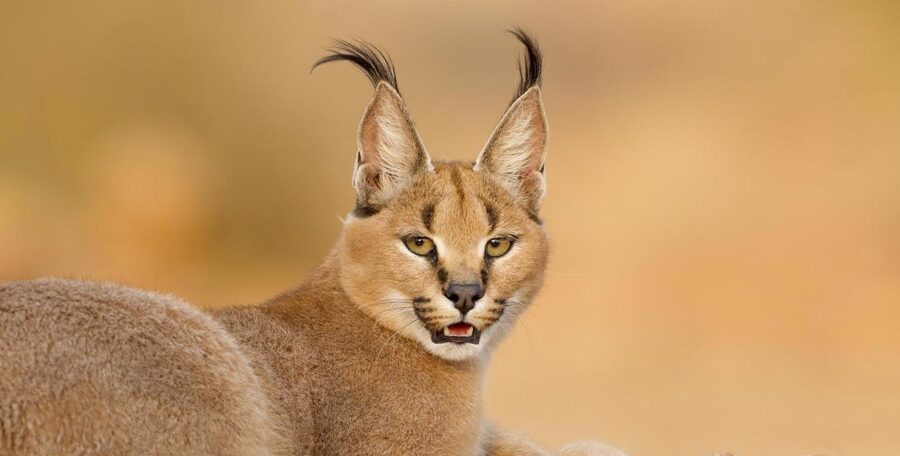
With piercing eyes, tufted ears, and a silent step, the caracal is one of the most enigmatic wild cats prowling the savannas, deserts, and scrublands of Africa, the Middle East, and parts of South Asia. Often mistaken for a lynx due to its striking ear tufts, the caracal is a distinct species with its own set of superpowers—including some seriously impressive aerial acrobatics. Let’s dive into the world of this fascinating feline.
What Is a Caracal?
The name caracal comes from the Turkish word karakulak, meaning “black ear.” That’s a fitting title for this medium-sized wild cat (Caracal caracal), which is easily identified by the dramatic black tufts that spring from the tops of its ears. Caracals weigh between 20 and 40 pounds and have a sleek, muscular body covered in short reddish-gold fur. Unlike many other wild cats, they have no spots or stripes as adults, giving them a clean and regal appearance.
Masters of the Leap
Caracals are exceptionally powerful for their size, capable of jumping up to 10 feet into the air from a standing position. This feat isn’t just for show—caracals use it to catch birds mid-flight, often snagging multiple in one incredible leap. Their strong hind legs, flexible spines, and lightning reflexes make them some of the most agile hunters in the animal kingdom.
Silent and Solitary Hunters
Caracals are primarily nocturnal and highly elusive, which is why they’re rarely seen even in areas where they are common. They are solitary creatures, using stealth and patience to stalk their prey—usually small to medium-sized animals like rodents, birds, hares, and antelope fawns.
Though not large cats, caracals are capable of taking down prey several times their size. They rely on speed and surprise rather than brute strength, and their excellent hearing helps them detect the faintest rustle of movement in grass or underbrush.
Ears That Do More Than Look Cool
Those signature ear tufts aren’t just for fashion. They’re thought to play a role in communication, possibly by signaling mood or intent to other caracals, and may also help with camouflage or confusing prey. Beneath those tufts, caracals have extraordinarily sensitive ears with over 20 muscles that allow them to pinpoint the exact direction of sounds.
Habitat and Range
Caracals are incredibly adaptable. They live in a wide variety of dry environments, including savannas, semi-deserts, mountains, and scrub forests. Their range stretches across most of sub-Saharan Africa, parts of North Africa, the Arabian Peninsula, and into western and central Asia.
Caracals and Humans
Historically, caracals were trained by royalty in India and Persia for use in hunting, especially to chase birds. This earned them the nickname “hunting leopard,” even though they are not related to leopards. In modern times, conflicts arise when caracals prey on livestock, leading to tension between them and farmers. In South Africa, for instance, they are sometimes targeted as pests.
Conservation Status
The caracal is currently listed as Least Concern by the IUCN, thanks to its wide range and adaptable nature. However, in some regions, habitat loss and persecution pose localized threats. As with many wild species, habitat protection and responsible coexistence are key to ensuring the caracal’s future.
Final Thoughts
The caracal may not have the fame of lions or leopards, but it deserves a spotlight of its own. With its elegant appearance, remarkable athleticism, and stealthy lifestyle, the caracal is a reminder of the wild beauty that still prowls the world’s wilder places—if you know where (and when) to look.
Did You Know?
- Caracals can survive long periods without water, getting most of their moisture from prey.
- Young caracals have faint spots that fade with age.
- In some cultures, they were believed to ward off evil spirits.
More photos below ↓

















Disclaimer: This blog post is for edutainment purposes only and may not be entirely accurate.






